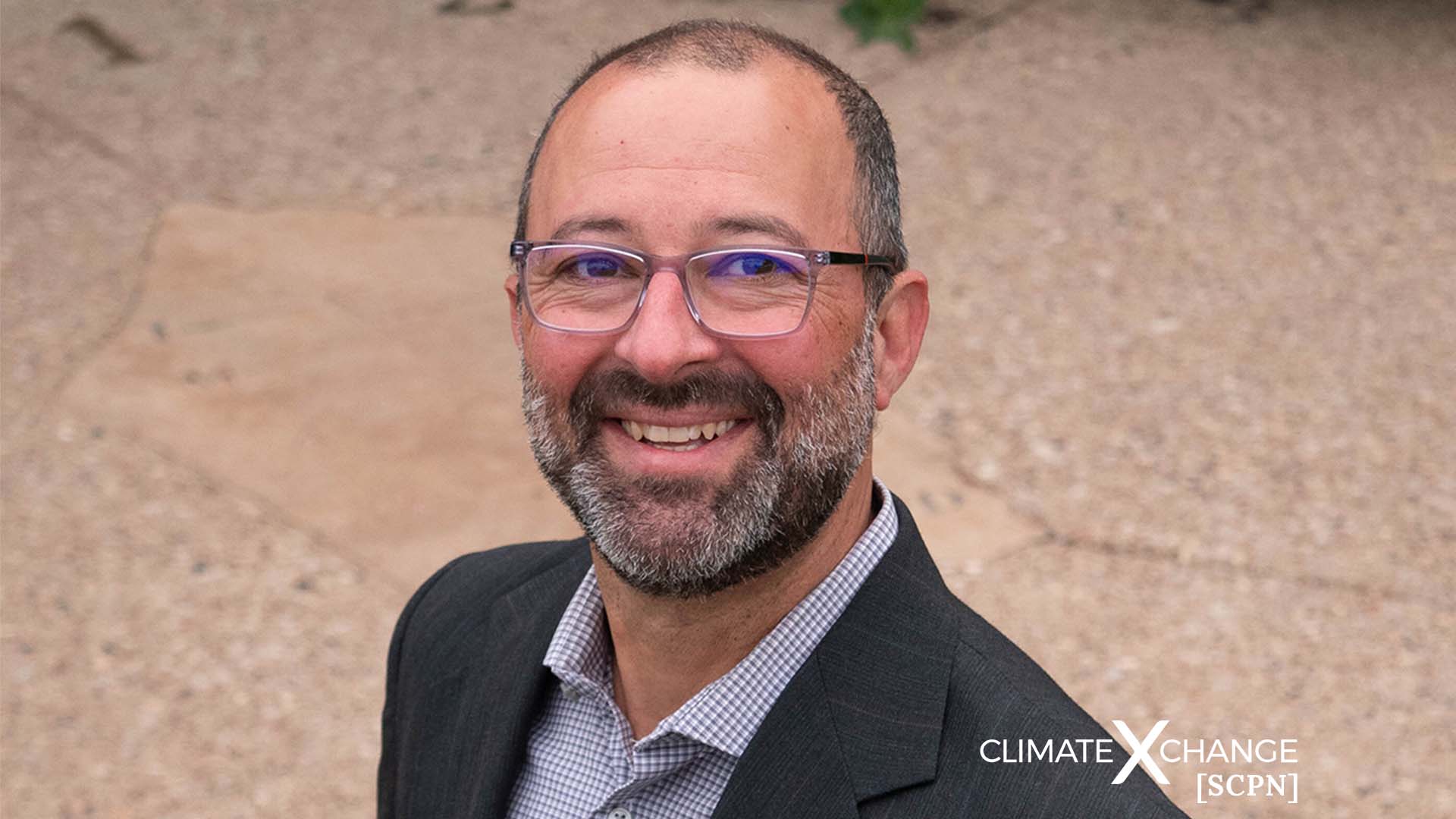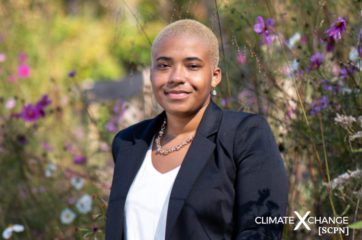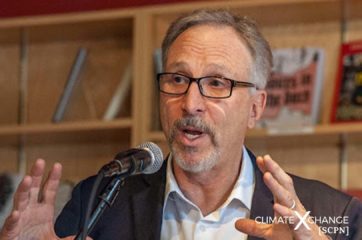All across the country, members of our State Climate Policy Network (SCPN) are fighting to make an impact on climate change in their communities. We have individuals in our Network from all 50 states, each experiencing climate change differently in their local areas and finding unique solutions to build resiliency efforts.
Nick Hylla is the Executive Director of the Midwest Renewable Energy Association (MREA), a non-profit organization working to promote renewable energy and energy efficiency in the Midwest through education, collaboration, and training. We spoke to Nick about his work in the renewable energy sector overcoming partisan barriers to implementing renewable energy in the Midwest.
Claire Hetzel: Can you start off by just telling us a little bit about yourself and how you got involved in the climate space, and the renewable energy space in particular?
Nick Hylla: My background is actually in natural resource management. I worked in Oregon at the Multnomah Service District in Portland, and that started my appreciation for education and the need to engage younger folks in the environmental space — to help them understand the context for the plethora of modern benefits we enjoy. From there, I signed up for a graduate program in Wisconsin in natural resource management that had an applied Peace Corps service. I served in the Peace Corps in South America, and it really opened my eyes to the development needs, both globally and domestically, and the lack of access that many people have to a clean environment, as well as all of the jobs and benefits that go with that.
I started to look for a career that could be more oriented towards that. I was asked by the Midwest Renewable Energy Association (MREA) to join the board, and they had an instructor development job to grow the instructor network to train solar and wind professionals — that’s what I do, instructor training. I was hired here 13 years ago, and now I’m the Executive Director, and it’s been absolutely wonderful. We train between 500 and 1,000 young professionals and current professionals every year. We have partnerships with organizations all across the Midwest with a strong focus on training, recruitment, and capacity development in disadvantaged census tracts with community partners that serve those groups. We try to be a big tent organization. We generally don’t lead with the climate change narrative, we lead with local job creation, economic development, and long-term bill reduction. We see real potential for the transition of the business model of energy from one that is closed and monopolized and polluting, to one that is open and competitive and local and clean.
Claire Hetzel: As far as your work with the MREA, have you noticed any changes over time with the training programs? Are people more interested in getting involved recently?
Nick Hylla: The biggest change is that, for its first 25 to 30 years, the training program and MREA trained this ‘cottage industry’ of professionals in small, local electrical shops or independents to engage in the residential and small commercial space through energy efficiency and on site energy production. And we really catered to that group. When it became more of a national effort during the Obama years, we started doing a lot of worker retraining in the Midwest. The industry developed, and solar is now the leading source of new electricity capacity in the United States and has been for the past five years. If you look at solar and wind, there’s more of that built than everything else. That is a relatively new phenomenon.
The way the industry is changing now is you’re seeing a lot of this distributed development and optimized grid planning, where we’re realizing that if we want to build big-scale, then we have to optimize the distribution system because you need to balance supply and demand. The way that that’s changed training is now we’re seeing a lot of large utility scale projects. There’s a whole new kind of training paradigm needed for those projects. If you think about the move towards electrification, it’s this whole concept of building electrification, electrifying heating loads, energy efficiency, awareness, production storage, and so we’re seeing a lot of changes in the industry and an incredible growth in workforce demand.
Claire Hetzel: I suspected that might be the case. What has been your biggest challenge or obstacle when working with stakeholders or other organizations within the industry?
Nick Hylla: The biggest challenge is always that energy is a fundamental part of the economy and basically underwrites all activity. That industry is very capital-intensive, and capital-intensive industries tend to not change very rapidly — they’re very calcified and defensive of competition. These are for profit companies that are regulated by a three-person appointed commission, and in the political construct we have right now, it’s a lot of pay-to-play politics. You have to ask yourself, is this business model — where we have this extremely wealthy and politically connected industry that maintains a monopoly over its customers — able to be regulated by a three person appointed commission? And it turns out that strong legislative action and consumer protection work and can make markets grow.
Amazingly, if you look at Minnesota, Iowa, Illinois, Michigan, all the surrounding states around Wisconsin, the vast majority see renewable energy as the future and understand the benefits. The biggest problem has really been political roadblocks in Wisconsin, because the legislative leadership is dragging their feet and constantly fighting against it. Whereas in Minnesota in 2013, Democrats controlled the House, the Senate, and the governor’s mansion, and they passed the Minnesota Solar Energy Jobs Act, which launched their whole solar energy market. Now, legislation is completely bipartisan because the benefits of local solar energy development in the districts across Minnesota have created so many jobs and so much benefit that it doesn’t matter if you’re Republican or Democrat, you see this as a job creating engine. Our biggest roadblock has really been Wisconsin’s political leadership in the Assembly and in the Senate. They’re talking about it now, and we are hopeful that they’ll do something more than just the culture war antics that have become so commonplace.
Claire Hetzel: That’s really interesting. And I was going to ask you about, specifically, the Midwestern states. Along those lines, the major successes with those states is that they’ve been able to pass these things in a favorable political climate?
Nick Hylla: The clean energy transition is a success follows success model. If you have a gatekeeper that, through the electricity tariffs they offer and the legislative and judicial constraints that they’ve put in place, can strangle a market, what you need to do is get rid of the gatekeeper. In states that have been able to do that, they open up this whole new paradigm. Those benefits are realized, and when everybody realizes the benefits, it’s impossible to take away because it’s the new normal. We’ve got to get the big smokestacks out of our communities. I’m not saying that there aren’t major challenges. What about all the workers in those plants? What about the tax revenue that’s generated from those plants? What about reliability and cost affordability of the transition? And what about the planning between the distribution system and the transmission system? There are real challenges, but that’s why it takes bipartisan effort to really develop this vision. For those states that had a partisan start to this because the Democrats are more willing to get rid of the gatekeepers and be more progressive and look towards the future, now it’s bipartisan, because everybody knows the benefits and the potential.
Claire Hetzel: Is it enough for certain stubborn states to see the successes of states who have implemented the transition? Is it only a matter of time to convince people?
Nick Hylla: There’s a benefit to being a laggard, because you get to learn missteps and mistakes of other states in implementing. It’s not turned out that way, though. In Wisconsin, our electricity rates are still higher than our neighbors and are projected to continue to be, even though they’re full throttle on this transition. I want to be optimistic and answer your question as ‘yes, of course, as we see successes across borders.’ But the other part of me feels that our politics are so broken, that somehow even though these things might be in our interest we might stay in our political camps. That’s why we’re not a climate-forward organization, because that whole construct creates dissonance with the politics of it. Talking about just the benefits and the possibilities and local economic development, and even this language of property rights and the freedom to do these things and the business benefits, etc., I think is more effective because we need to dial down the political rhetoric. I think part of the need here is reconciliation between the political parties and just taking the foot off the accelerator. It’s hard because a lot of people want to fight and want to struggle and identify the wrong things and fight against it. It’s a real challenge for our movement to say, how can we create big tent coalitions that cannot be ignored?
Claire Hetzel: Changing directions a little bit here, you’ve been involved with some research work with the SunShot Initiative. Could you tell us a little bit about that work and what you’ve been involved with?
Nick Hylla: During the beginning of the Obama administration, there was an effort to leverage the capacities of all of the departments in the federal government in an initiative they called SunShot, which was modeled after the Moonshot program to get to the moon. This was to make solar energy the most affordable electricity on the utility system. As part of that context, it’s really about cost. It’s a low-margin commodity industry, so we have to reduce the human costs and the technology costs. There’s a hard cost, and then there’s soft costs, which is the cost of permitting, work on the project, financing, customer acquisition, all these stack up, the soft costs. The U.S. Department of Energy put out a number of funding opportunities and we entered a cooperative agreement to work on soft cost issues in the Midwest. That includes helping jurisdictions to find appropriate permitting, advancing consumer protection, and helping with customer education and workforce training. We’ve been really appreciative of the support. It has been very successful and solar energy is now the most affordable electricity on the grid right now. But it hasn’t necessarily been taken advantage of uniformly because we are what I call a ‘balkanized market’, where not only do you have the 50 states, but you have all the utility jurisdictions and local jurisdictions within those states. Every utility has a different policy and every state has a different policy. Part of that work is to try to help create some consistency and efficiency for all those jurisdictions so that companies can operate and serve customers in the most efficient way possible.









